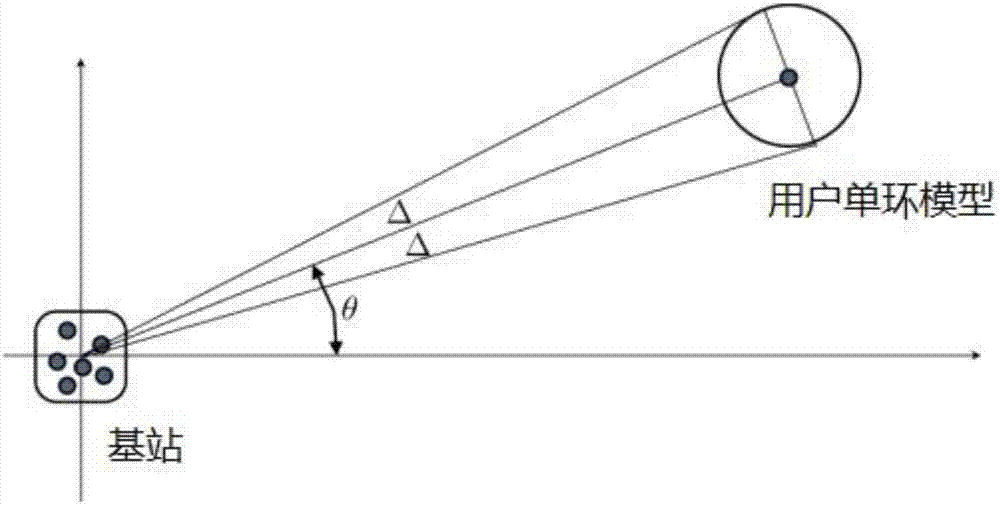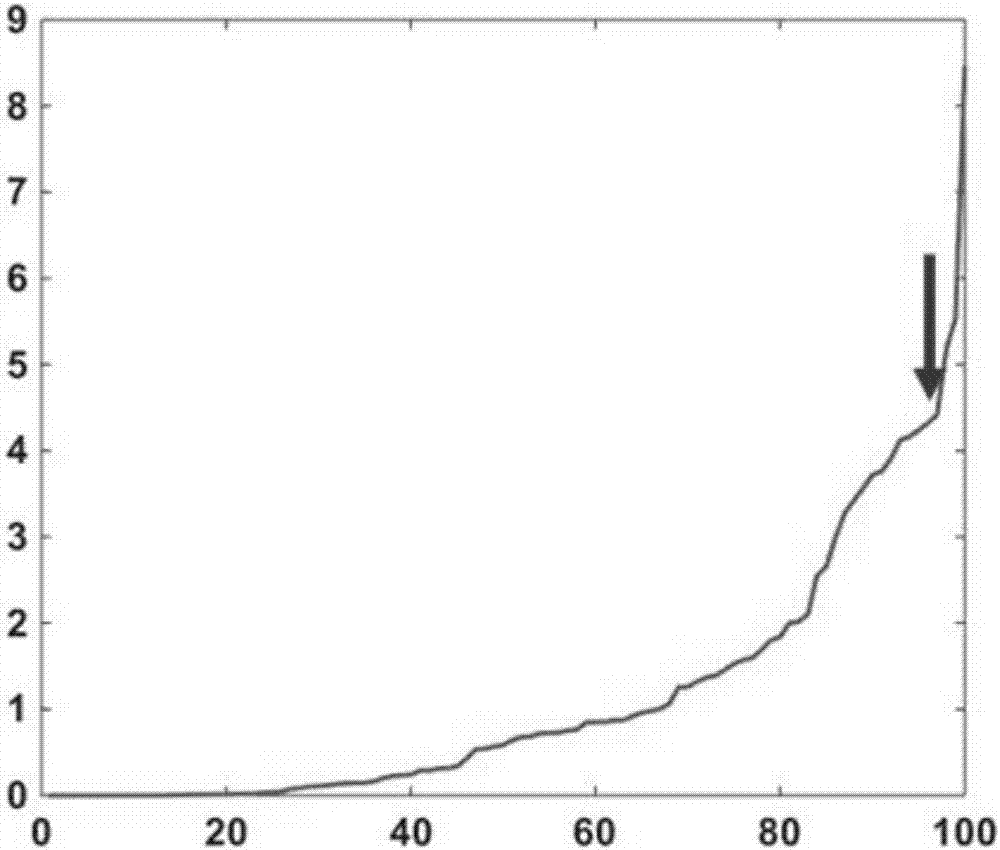User packet method based on density in large-scale MIMO system downlink
A user grouping and downlink technology, applied in the transmission system, radio transmission system, electrical components, etc., can solve the problem of system rate impact and achieve the effect of improving the system rate
- Summary
- Abstract
- Description
- Claims
- Application Information
AI Technical Summary
Problems solved by technology
Method used
Image
Examples
Embodiment Construction
[0026] The embodiment of the present invention provides a density-based user grouping method in the massive MIMO downlink, which uses the k-dist graph to estimate the user density distribution, and then uses the DBSCAN algorithm to group the users, which greatly reduces the number of users in the massive MIMO system. computational complexity.
[0027] The method of the present invention proposes a density-based user grouping method on the basis of the JSDM scheme. The JSDM scheme is a scheme for reducing the complexity of large-scale MIMO proposed by Ansuman Adhikary et al. on the basis of channel correlation, and has two main features: The first is to group all users according to the similarity of channel correlation, and the second divides the precoding matrix into two stages to eliminate inter-group interference and intra-group interference respectively. The physical model of this method is to consider the downlink in a massive MIMO system in a single-cell FDD system. The t...
PUM
 Login to View More
Login to View More Abstract
Description
Claims
Application Information
 Login to View More
Login to View More - R&D
- Intellectual Property
- Life Sciences
- Materials
- Tech Scout
- Unparalleled Data Quality
- Higher Quality Content
- 60% Fewer Hallucinations
Browse by: Latest US Patents, China's latest patents, Technical Efficacy Thesaurus, Application Domain, Technology Topic, Popular Technical Reports.
© 2025 PatSnap. All rights reserved.Legal|Privacy policy|Modern Slavery Act Transparency Statement|Sitemap|About US| Contact US: help@patsnap.com



